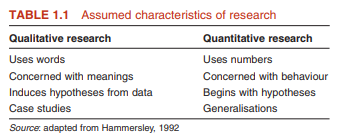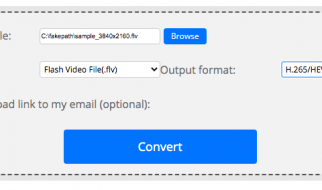Technological advancements and innovation within the insights industry means that research methodologies are constantly evolving to be better and more effective. Thus, before undertaking any research, it is vital that we have a good understanding of the research methodologies available to us.
Whether you?re a seasoned insights professional or a first time researcher, understanding the methodologies available within the research toolkit grounds research in the real world. One of the first, and most basic questions to answer is whether you are going to conduct qualitative and/or quantitative research?
Whether you?re a seasoned insights professional or a first time researcher, understanding the methodologies available within the research toolkit grounds research in the real world.
The Summary
Qualitative and quantitative research and complementary methods yield different forms of data. Quantitative research methods, such as surveys, seek to generate numerical data that can be used to produce statistics and identify patterns. Qualitative research methods, such as focus groups, are used to understand opinions, attitudes and motivations; answering questions that cannot be quantified with numbers
According to USC Libraries, quantitative research ?emphasises? the statistical, mathematical, or numerical analysis of data collected through polls, questionnaires, and surveys, or by manipulating pre-existing statistical data using computational techniques.?
Through this definition we can identify the key characteristics of quantitative research. Quantitative research provides measurable statistics that work to quantify the opinions and attitudes of the research participants. Typical quantitative research methods such as surveys and polls provide numerical data that can then be visualised into graphs, charts, and tables for analysis.
Quantitative research aims to objectively test a theory or measure the attitudes of the target audience in response to a specific research objective. This does not take place in a natural environment, the effect of which promotes objective responses from participants. However there is often no room for participants to explain the reasoning behind their responses or the participant?s individual interpretation of the question.
The manipulation of pre-existing data is a reference to the retention of a corpus; once data has been gathered and collected, any new data can be added to that pre-existing corpus in order to further inform or generate new insights. In the insights industry today, quantitative research is frequently conducted online in order to reach a wider audience that is more likely to provide an accurate representation of the views of the population. The technology available to modern researchers, mean that surveys can be conducted quickly and easily if fast insights are needed, making it a popular option that has stood well the test of time.
Quantitative Data Analysis
Through visualisations offered by graphical representations of quantitative data, patterns can be identified which reveal important insights and trends. This pure mathematical approach to data analysis is typically objective and rational, which lends itself to percentage based and comparative findings such as:
?74% of participants reported a positive response when engaging with customer service; however only 36% of those reported a quick resolution of their issue despite their positive experience?
These data points often are used by businesses to confirm (or sometimes disprove) a hypothesis. In certain situations, quantitative data is used as the basis for a hypothesis that can be tested further.
Qualitative Research in Detail
Qualitative research is defined by the University of Utah as ?a process of naturalistic inquiry that seeks in-depth understanding of social phenomena within their natural setting.? Rather than statistical and numerical measurements that describe the situation (more commonly known as the ?what?), qualitative research focuses on the reasoning behind the actions of individuals, societies, and cultures (known as the ?why?) through open ended, exploratory questions.
The typical characteristics of qualitative research are directly opposite to the characteristics of quantitative research, as is shown by the table below:
 Table taken from ? What Is Qualitative Research?? see original publication here.
Table taken from ? What Is Qualitative Research?? see original publication here.
Qualitative research takes place in natural environments. ?Natural environments? in this context means a place that participants can freely discuss and provide in-depth answers to the questions that the researchers provide. This natural place can be either online or offline depending on the resources available to researcher; however in recent years, most research has moved online as it enables researchers to get a sample that is better representative of the wider population.
Qualitative research methods are much more personal, creative, and interactive than their quantitative counterparts. Methods such as focus groups, online research communities, forums, etc. allow research participants more freedom to provide in-depth answers and discussions for more detailed and informed insights.
In regards to the insights industry today, the main forms of qualitative research are based on or draw influence from ethnographical, psychological, and sociological research methods in order to understand the meaning behind consumer behaviour. This understanding can never be fully established due to the evolutionary nature of human behaviour, however, keeping up with it as best we can provide opportunities for enhanced marketing and sales approaches.
Qualitative Data Analysis
Context is key when analysing qualitative data. The insights gained from the data collected through qualitative research will always be context-dependant and thus must be carefully reported in reference to the context in which it was gathered. The narrative analysis method in particular considers context carefully, as it is a technique in which the primary data collected by researchers is reformulated into summaries which take into account the context of each case and the difference experiences of each participant.
One of the most common ways to analyse qualitative data is thematic analysis, in which recurring themes, patterns, and relationships within the data are identified and interpreted to generate insights. Of course, the challenge with this form of analysis is that it is subjective ? influenced by the perception of those conducting the analysis. For this reason, qualitative data is more often displayed in its raw or abridged form than quantitative analysis.
Complementary Not Competitive Methods
The type of research you undertake will greatly affect the type of insights generated at the end of the research project; so attaining a working knowledge of qualitative and quantitative research methodologies is essential in order to plan and implement a successful research project.
The type of research you undertake will affect the type of insights generated. A working knowledge of qualitative and quantitative methodologies is essential in order to plan and implement a successful research project.
Quantitative research methods such as surveys and questionnaires will equip researchers with the knowledge of what the situation is, whereas qualitative research methods will provide the context and the reasoning as to why the situation has occurred.
While it is possible to use only one type of research within a study, the data generated from this will never be able to provide the full picture. In order to implement a well-considered research project that will provide accurate and actionable insights, it is best to combine qualitative and quantitative research methods to be in a better chance of attaining the full story.
The original version of this article appeared on the FlexMR Insight Blog and can be accessed here.

